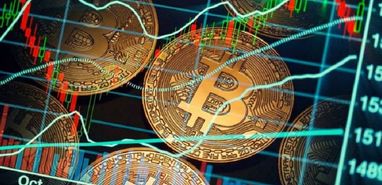
In recent hours, Bitcoin‘s price has regained ground, driven by renewed enthusiasm among investors. Several factors are behind this positive movement, although some elements could still counteract this trend.
It’s important to note that the U.S. economy remains in a delicate situation despite the improvements observed in 2023-24. This is one of the main factors contributing to the volatility of risk assets. Now that the Federal Reserve (Fed) seems to have the economic environment under control, optimism is starting to emerge.
Bitcoin with Renewed Bullish Momentum, but Is It Sustainable?
Bitcoin’s price isn’t determined in isolation; it depends on several external factors that influence all markets. These elements ultimately provoke a general reaction from investors, which determines the behavior of the leading cryptocurrency.
Among these factors are geopolitics and the macroeconomic data of the world’s major powers. The recent release of the minutes from the July 30-31 FOMC meeting generated a very positive sentiment. Virtually all Fed representatives agreed on the need for a rate cut in September.
Another factor fueling this optimism is the possibility that the first cut could be 50 basis points. Although consensus expects a 25-basis-point cut, the labor sector review by the BLS could indicate a greater slowdown than anticipated. In that sense, the rate cut could be more aggressive. As expected, this brought good news for the cryptocurrency market.
The renewed momentum in Bitcoin’s price was reflected in a sustained rise above $60,000 per coin. At the time of writing, BTC’s value stands at $61,247, according to CoinMarketCap data. Its performance has exceeded +3% in 24 hours and +4% in a week.
Enthusiasm is also reflected in comments like those from Michael Saylor, executive chairman of MicroStrategy, who expressed on his X account: “By my calculations, Bitcoin’s price will keep rising forever.”

Economic Dynamics Favor BTC’s Rise
A reduction in interest rates implies cheaper money. As a result, companies face the prospect of paying lower interest on their loans, leading to a capital surplus.
With this surplus, more resources are injected to stimulate production and improve wages. This reality extends throughout the economy, generating an increase in social wealth, which in turn translates into higher financial investments in the retail sector. The improvement in business results also drives institutional investments.
This one-way charge triggers rallies across the equity sector, including risk assets and cryptocurrencies. This explains why the Fed representatives’ dovish stance has been so well received by Bitcoin investors.
Persistent Dangers
Despite this positive environment, it’s impossible to say the path is clear for a total recovery in the crypto sector. This renewed momentum in Bitcoin’s price could face challenges that provoke a negative reaction.
These challenges mainly include geopolitical conditions. The escalation of the conflict in Ukraine and the potential war in the Middle East are latent risks that could have devastating effects. Other dangers also add up, such as the rise in Mpox cases (formerly known as monkeypox).
The specter of lockdowns and the closure of ports and businesses looms over international trade and markets. In the worst-case scenario, government measures could stimulate a new surge in inflation, leading the world to a situation similar to that of 2021.
As can be seen, assets like Bitcoin do not have a guaranteed clear path.
The fact is that Bitcoin and the crypto market are in a better position than they were at the beginning of August. At that time, labor market data indicated a potential recession linked to employment, which caused panic among investors. However, the fear subsided, and subsequent data showed that the concerns were not so justified.








By Andrej Kovacevic
Updated on 23rd August 2024